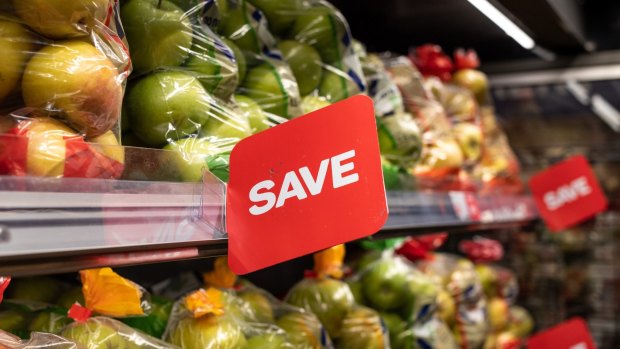Inflation surprise puts rate rise back on agenda

Save articles for later
Add articles to your saved list and come back to them any time.
A surprising lift in inflation will force the Reserve Bank to consider another interest rate rise as early as next week, with house values growing in every capital city and rents climbing at their fastest pace in more than a decade.
As RBA governor Philip Lowe said one way to deal with soaring rents is for people to get new flatmates, figures from the Australian Bureau of Statistics showed inflation pressures remain elevated with prices for food staples such as bread, milk and cheese growing at double-digit rates.
Interest rates have been increased by the Reserve Bank at 11 of its past dozen meetings, taking the cash rate to an 11-year high of 3.85 per cent, in a bid to bring down inflation.
The bureau’s new monthly measure of inflation, released on Wednesday, showed the annual rate increased to 6.8 per cent from 6.3 per cent in April.
It was pushed up largely by the impact of the Morrison government’s halving of fuel excise that slashed petrol prices in April last year. That drop in prices fell out of the rolling inflation average, lifting it by 0.6 percentage points.
Inflation also remains elevated for holiday travel and accommodation, up 11.9 per cent over the past year. Dairy products are 14.5 per cent up on a year ago while bread is 11.4 per cent more expensive, with both affected by strong global demand and higher production costs.
The cost of new dwelling construction fell to 9.2 per cent in April, after peaking at 21.7 per cent in the middle of last year. But rents, which turned negative during mid-2021, are now growing at 6.1 per cent with fears they will accelerate further.
While the headline inflation rate climbed, the bureau’s measure of underlying inflation – which excludes volatile areas and holiday travel – subsided to 6.3 per cent from 6.8 per cent.
Lowe, giving evidence to a Senate estimates hearing on Wednesday, said inflation had peaked, but it was still too early to claim it was falling sharply.
“We’re not going to declare victory until victory is achieved, so we won’t be declaring victory prematurely,” he said.
Economists at Capital Economics and Goldman Sachs now expect the cash rate to reach 4.35 per cent in the coming months.
EY chief economist Cherelle Murphy said the inflation data would force the Reserve Bank’s hand.
“This result will be disappointing for the Reserve Bank and strengthens the case for tighter monetary policy,” she said.
House values started to ease just ahead of the Reserve Bank’s first interest rate increase in May last year with concerns at the time the market could shed more than 20 per cent.
A surprise lift in inflation will force the Reserve Bank board to consider another interest rate rise as early as next week.Credit: Bloomberg
But CoreLogic data released on Thursday showed house values in every capital city lifted last month, led by a 2.1 per cent jump in Sydney where the median value climbed to almost $1.3 million.
In Melbourne, house values increased by 0.9 per cent to $911,000 while they lifted by 1.5 per cent in Brisbane to $792,000.
Overall dwelling values increased 1.2 per cent in the month to be 2.3 per cent up over the quarter.
CoreLogic’s research director Tim Lawless said buyers were chasing a small number of properties, putting upward pressure on prices.
“With such a short supply of available housing stock, buyers are becoming more competitive and there’s an element of FOMO creeping into the market,” he said.
Lawless said the number of properties for sale was down to levels last seen in 2007. Rental property listings in the nation’s capital cities are 36 per cent down on their five-year average levels.
Lowe said the best way to bring down rents and house prices was “supply, supply, supply” but he also noted people would likely need to “economise” on their property choices.
He said that could mean bringing in an extra flatmate or moving back in with their parents.
“As rents go up, people decide not to move out of home, or you don’t have that home office. We need more people, on average, to live in each dwelling,” he said.
His comments prompted criticism from housing groups.
Everybody’s Home spokesperson Maiy Azize said young Australians were already spending a record period of time at home because they could not afford their own property.
Lowe used what could be his last appearance before a parliamentary committee to reject suggestions from some economists that the May federal budget was adding to inflation and higher interest rates.
Treasurer Jim Chalmers’ budget contained a $3.6 billion cost-of-living package to help low-income earners deal with high energy prices. It also contained billions of dollars to cover a 15 per cent increase in wages for aged care workers.
Lowe said the electricity package would reduce inflation by 0.75 percentage points, while also reducing inflation expectations.
Cut through the noise of federal politics with news, views and expert analysis from Jacqueline Maley. Subscribers can sign up to our weekly Inside Politics newsletter here.
Most Viewed in Politics
From our partners
Source: Read Full Article
